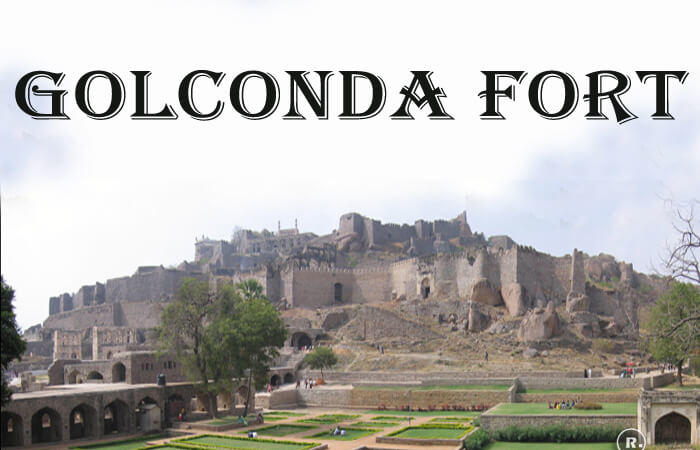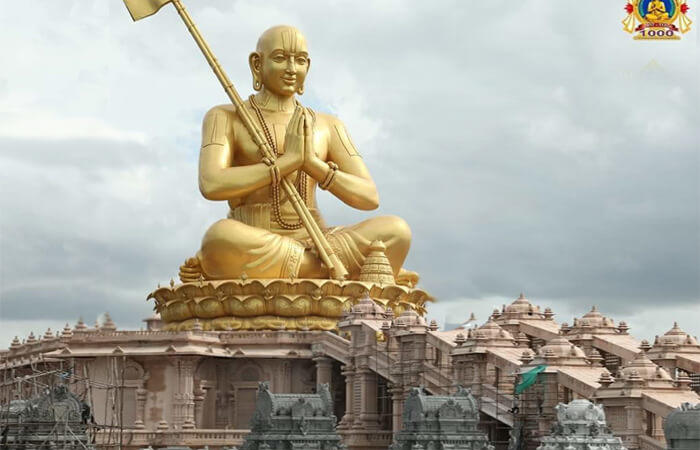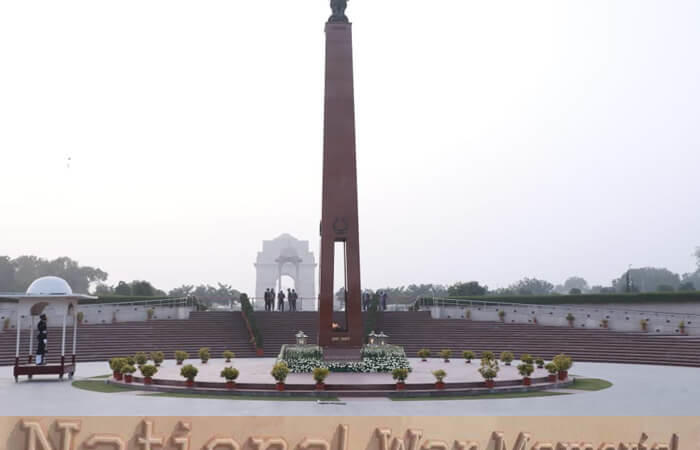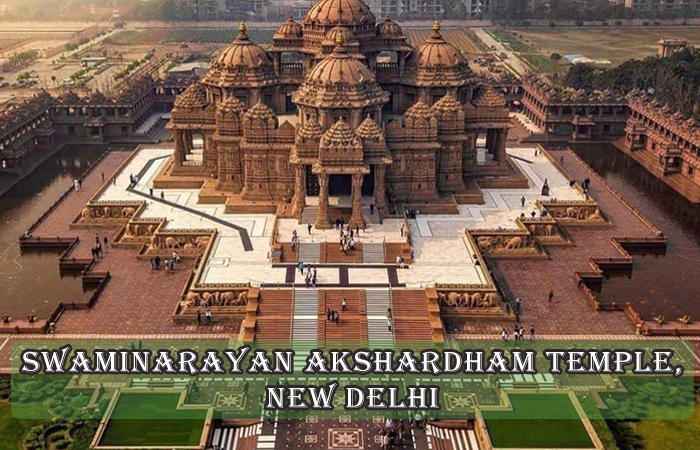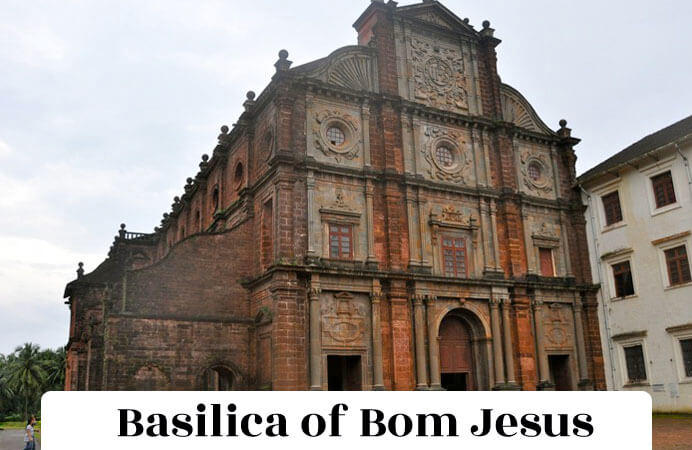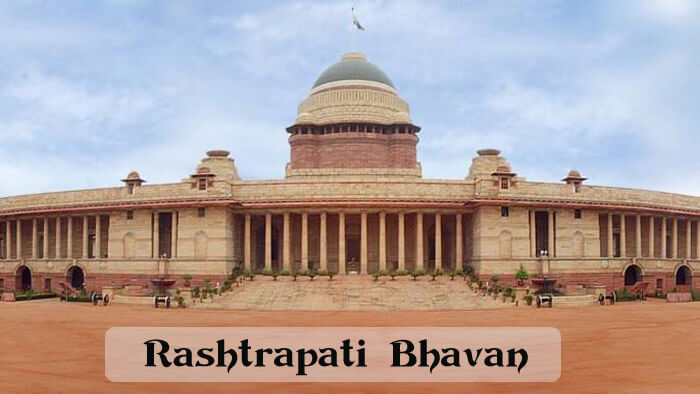Somnath Temple Gujarat
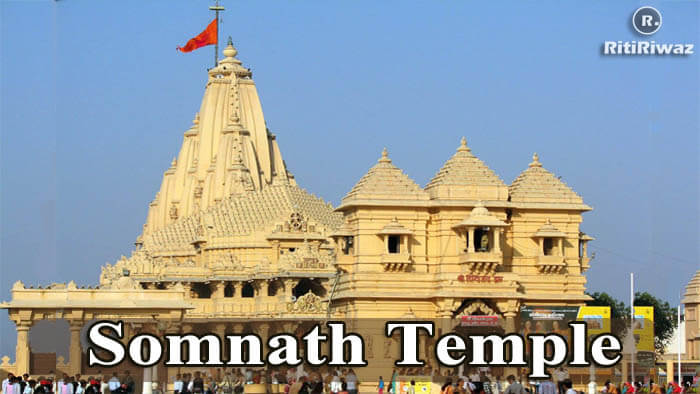
The Somnath Temple located in the Prabhas Patan near Veraval in Saurashtra, on the western coast of Gujarat, India. Somnath means “Lord of the Gods” and is considered a part of Lord Shiva, and is known as the first Jyotirlinga among the twelve Jyotirlinga shrines of the God Shiva.
Many archeologists and historians believe that this temple was created by God himself. The temple is said to be situated at such a place that there is no land in a straight-line between Somnath seashore till Antarctica. Many religious and mythological stories are associated with the construction of this temple. It is believed that this temple was built by Chandradev Somaraja (Moon God) himself, which is also mentioned in the Rigveda.
Since 1026, the Somnath Temple has been looted and destroyed 17 times by rulers and leaders including Mahmud Ghazni, Afzal Khan, and Aurangzeb. The Iron Man of India, Sardar Vallabh Bhai Patel, and architect Prabhachander were the ones to give the temple a new life on 11th May 1951 under the leadership and governance of the first president of India, Dr. Rajendra Prasad. The Somnath Temple is an example of pride and endurance and stands tall even after numerous attacks.
History of Somnath Temple
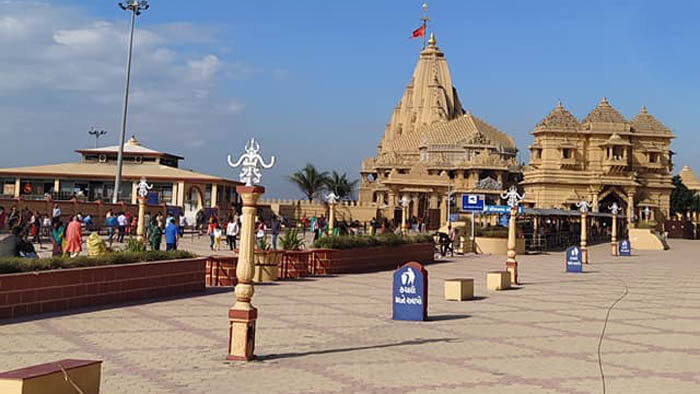
Where is it: In the Veraval port of Gujarat.
When was Somnath Temple Built: In the year 1951 after independence (current structure)
Who built Somnath Temple: Sardar Vallabhbhai Patel (current structure)
Architecture: Hindu architecture
Situated in Prabhas Patan near Veraval port in Saurashtra on the west coast of Gujarat, this temple has been a symbol of rise and fall in history. In ancient times, Somnath temple was attacked and broken by Muslims and Portuguese several times and it has also been constructed by Hindu rulers.
The Somnath temple was in existence even before one BC, it is believed that its second construction was done by some of the Vallabhi emperors of Vallabhi in the late seventh century. After this, in the 8th century AD, the Arab governor of Sindh, al-Junaid, attacked this magnificent Somnath temple and destroyed it.
After which it was constructed for the third time, in 815 AD, this holy shrine of Hindus Somnath temple was built by Guru Pratihara King Nagabhatta, he built it using red stones. However, there is no strong evidence that the Somnath temple was attacked by Al-Junaid, the Arabic governor of Sindh.
After this, in 1024 AD, Mahmud Ghaznavi attacked this very magnificent Somnath temple. It is said that Al Baruni, an Arabic traveler visiting India, described the grandeur and richness of the Somnath temple in his travelogue, after which Mahmud Ghaznavi intended to loot the temple with the help of about 5,000 of his companions he attacked it.
Suggested Read: Culture and Tradition of Gujarat

In this attack, Mahmud Ghaznavi not only looted crores of the property of the temple, damaged the Shivling, and destroyed the idols, but also took the lives of thousands of innocent people in this attack. The agonizing attack on Somnath temple by Mahmud Ghaznavi is also very well known in history.
After Ghaznavi attacked Somnath Temple, it was rebuilt for the fourth time by King Bhoja of Malwa and Emperor Bhimdev. Then in 1093 AD, Siddharaj Jai Singh also contributed to the prestige and construction of this temple.
In 1168, Vijayeshwere Kumarapala and Emperor Khangar of Saurashtra emphasized the beautification of this temple. However, after this, again in 1297 AD, the commander of Sultan of Delhi Alauddin Khilji, Nurasat Khan, ruled Gujarat and demolished this holy pilgrimage. Along with this, the iconic Shivling of the temple was fragmented and looted fiercely.
The continuation of the rise and fall of this temple continued. Sultan Muzaffarshah of Gujarat looted this holy pilgrimage in 1395 AD and then in 1413 AD his son Ahmad Shah ruined the temple. Mughal ruler Aurangzeb attacked this temple twice during his reign. He made the first attack in 1665 AD while the second attack in 1706 AD. In the second attack, Aurangzeb not only ransacked this temple and looted it, but also got many people killed.
When the Marathas established their authority over most parts of India, then in 1783 AD, the Maratha queen of Indore, Ahilyabai, built another temple of Somnath Mahadev for worshiping at a distance from the original temple of Somnath.
Suggested Read: Rani Ki Vav
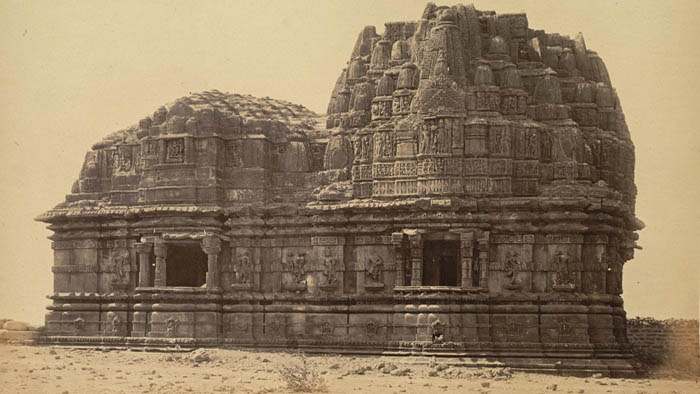
The present temple located in Gujarat was built by the former Home Minister of India Late Sardar Vallabhbhai Patel. After which in the year 1951, the first President of the country, Shri Rajendra Prasad, installed the Jyotirlinga in the Somnath Temple.
In the year 1962, the construction of this holy pilgrimage of Hindus dedicated to Lord Shiva was completed. On 1 December 1995, former President of India Shankar Dayal Sharma dedicated this holy pilgrimage to the general public of the nation and now this temple has become the center of faith of millions of people.
Suggested Read: Statue of Unity
Mythological and religious story related to Somnath temple
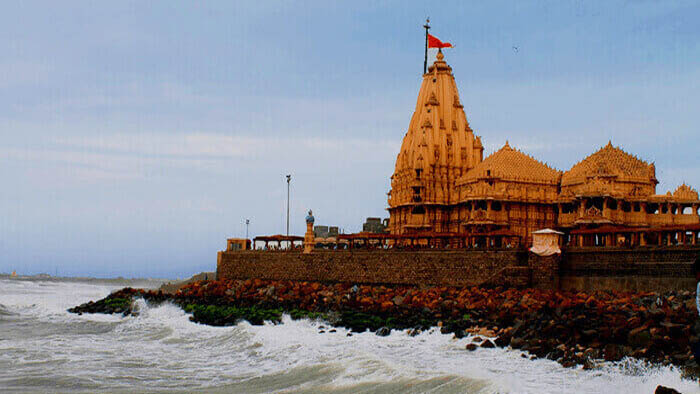
According to religious scriptures and texts, the Somnath temple was established by Moon God. The legend goes that the moon was married to the 27 daughters of Daksha Prajapati. He was partial to Rohini, his favorite, and neglected the others. At the same time, when Emperor Daksha Prajapati saw his own daughters being discriminated against, he first tried to convince Chandra.
But it had no effect on the moon, after which, seeing King Daksha grieving his other daughters, he gave a curse to Chandra to be ‘decayed’ and said that his radiance and lightness would be gradually reduced. A disturbed Chandra, came down to Prabhasa with Rohini and worshipped the Sparsa Linga of Somnath after which he was blessed by Shiva to grow and shine in the bright half, and also said that the brightness of Chandradev would be less in Krishnapaksa, while His brightness will increase in Shukla Paksha.
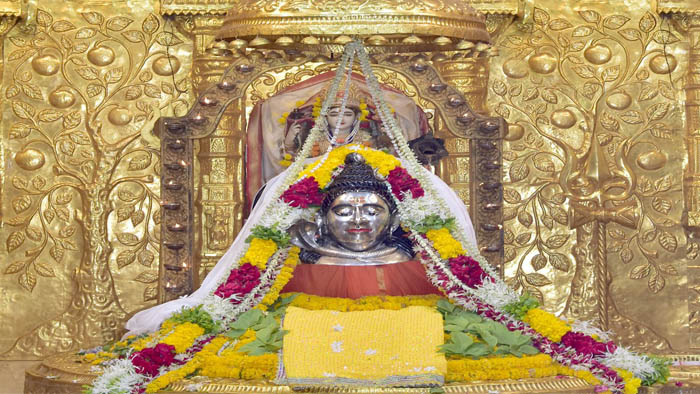
Lord Shiva said to Chandradev that for 15 days his brightness will decrease while his brightness will start to increase for 15 days and he will continue to receive full moonlight every full moon. Freed from the curse of King Daksha, Chandradeva prayed to Lord Shiva to stay at this place of Gujarat along with Mata Parvati, after which Lord Shiva accepted the worship of his beloved devotee Chandradev and started living here.
In the holy Prabhas region, Chandradev built this magnificent Somnath temple of Lord Shiva here. Whose glory and fame are spread all over the world. At the same time, the glory of Somnath-Jyotirlinga has also been mentioned in the famous epics of Hinduism, Shrimad Bhagavat, Mahabharata, and Skandpuran, etc. Along with this, this temple is also mentioned in the Rigveda. It is believed that praying at the Somnath Temple in Gujarat helps people get rid of the illness.
According to other folklore, Lord Krishna was resting at this holy place at Bhaluka Tirtha, when a hunter hunted the footprints in the soles of his feet by tricking him with deer eye, after which Lord Shri Krishna was here He left his body and went to Baikuntha. Therefore, a very attractive and beautiful temple of Shri Krishna is also built on the premises of this temple.
Suggested Read: Rann of Kutch
The architecture of Somnath Temple
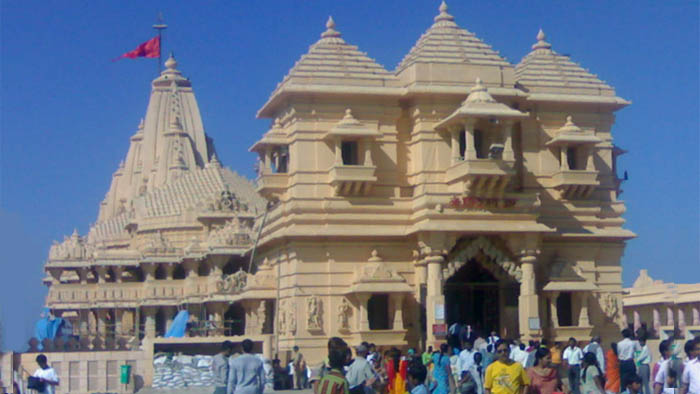
This sacred pilgrimage site of Hindus, Somnath Temple, has been reconstructed in the present-day Chalukya style. Along with this, it is also considered as a unique piece of ancient Hindu architecture.
The unique architecture and magnificent design of this temple attract people to its side. On the south side of this temple, there are attractive pillars, which are called Banastambha, while an arrow has been placed on top of this pillar, which shows that between the holy Somnath temple and the South Pole there is no land.
This first Jyotirlinga Somnath of Lord Shiva is divided into three parts, which include the sanctum sanctorum, Nrityamandap, and Sambandamap of the temple. The height of its peak is about 150 feet. The Kalash situated on this famous temple weighs about 10 tons, while its flag is 27 feet high.
Suggested Read: Shree Shatruenjay Teerth
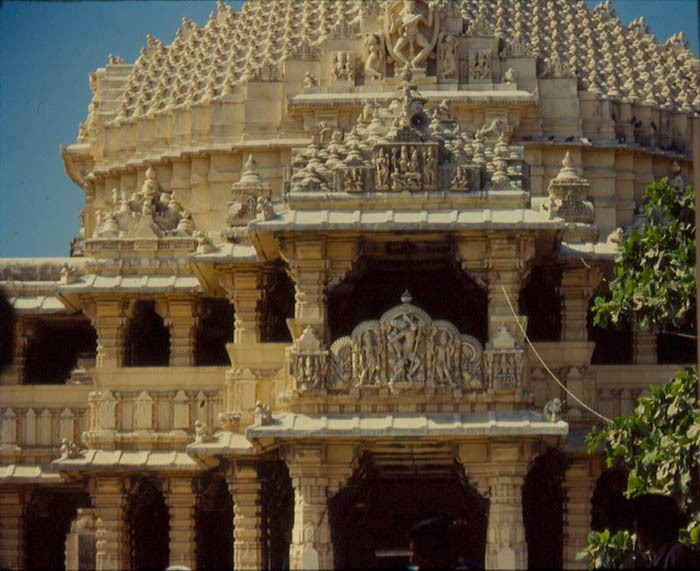
The temple is spread over a vast area of about 10 kilometers, which has about 42 temples. There is an amazing confluence of three rivers Deer, Saraswati, and Kapila, where devotees take a dip in faith. The idols of Parvati, Lakshmi, Ganga, Saraswati, and Nandi are enshrined in this temple. Above the Shivling in the upper part of this holy pilgrimage is a very beautiful statue of Ahalyeswara.
A very beautiful Ganesh Ji temple is located on the premises of Somnath temple and the statue of Aghorling has been installed outside the north dar. This holy pilgrimage place of Hindus has a lake called Gaurikund and a Shivling is installed near the lake.
Apart from this, on the premises of this grand Somnath temple, there is a very beautiful and huge temple of Mata Ahilyabai and Mahakali.
Suggested Read: Palitana Mandir
Interesting Facts about Somnath Temple
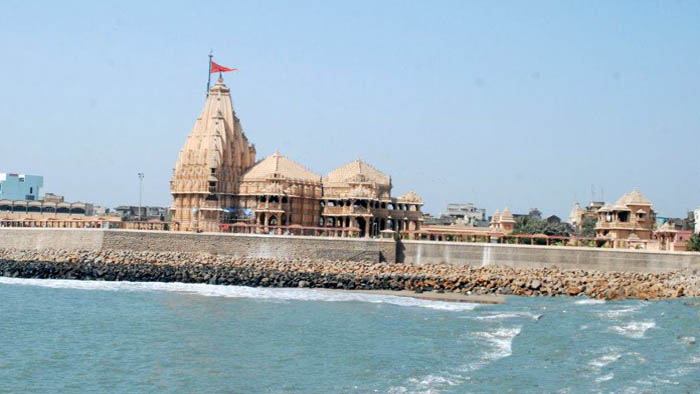
1 – In the temple, the Archaeological Department of the Government of India installed the Jyotirlinga of Shiva on the Brahmashila obtained by excavation.
2 – The foundation stone of the temple was laid on 8 May 1940 by the former emperor of Saurashtra Digvijay Singh and later the Shivling was installed in the temple on 11 May 1951 by Dr. Rajendra Prasad, the first President of India, after independence.
3 – The temple is divided into three major parts – the sanctum sanctorum, sabhamandap, and nrityamandap. The height of its peak is about 150 feet.
4 – The Kalash situated above the temple weighs about 10 tons and its flag is 27 feet high.
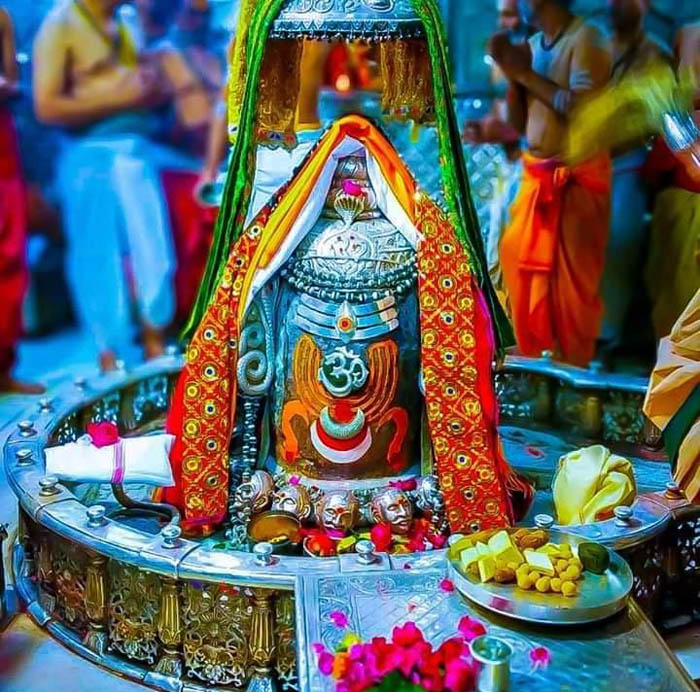
5 – The Shivalinga located in Somnath mandir has radioactive properties that help in maintaining balance above ground.
6 – Idols of Parvati, Saraswati Devi, Lakshmi, Ganga, and Nandi are also installed in this temple. Above the Shivling in the upper part of the land is the Ahalyeshwara statue.
7 – Ganeshji also has a temple in the temple complex and a statue of Aghorling has been installed outside the north gate.
8 – A grand temple of Mahakali is also built near the Ahalyabai temple in Prabhavnagar. Similarly, temples of Ganesha, Bhadrakali and Lord Vishnu, etc. are also built in the city.
9 – Near the city gate is a lake called Gaurikund. There is an ancient Shivling near the lake.
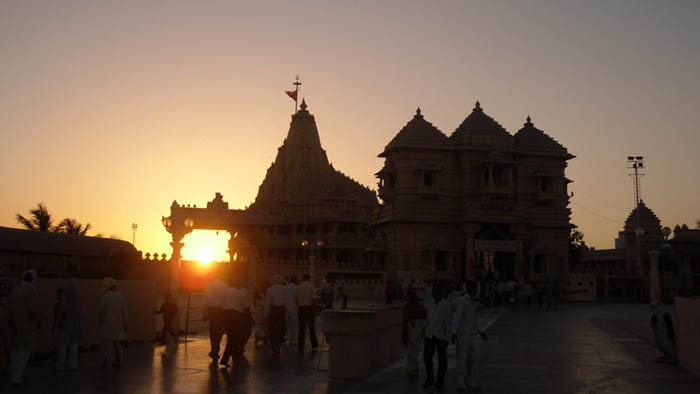
10 – This region was earlier known as Prabhaskshetra. Lord Sri Krishna made his Leela at the same place by making an arrow for a hunter named Zara. This is the place where Lord Krishna left his body.
11 – It is said that the Deodar wood Gates kept in Agra Fort belong to Somnath Temple. Mahmud Ghazni took these gates with him during the looting in 1026 AD.
12 – This temple is open daily from 6 am to 9 pm. Aarti is performed here thrice daily (7 am, 12 noon, and 7 pm).
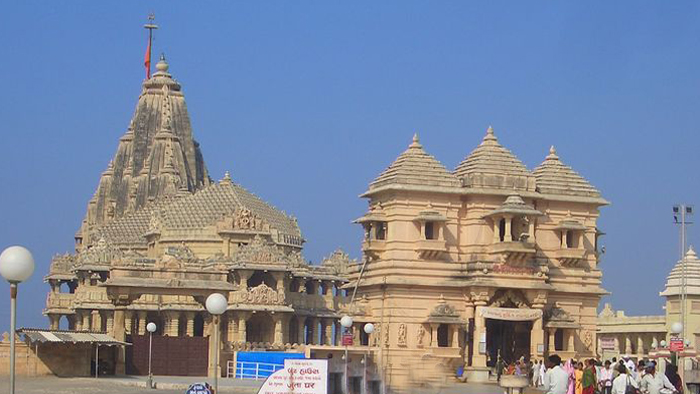
13 – An hour-long sound and light show runs from 7:30 to 8:30 in the temple premises.
14 – About 200 kilometers from the temple is the Dwarka city of Lord Krishna.
15 – There is a confluence of three rivers Deer, Kapila, and Saraswati and people come to bathe in this Triveni.
How to reach Somnath Temple
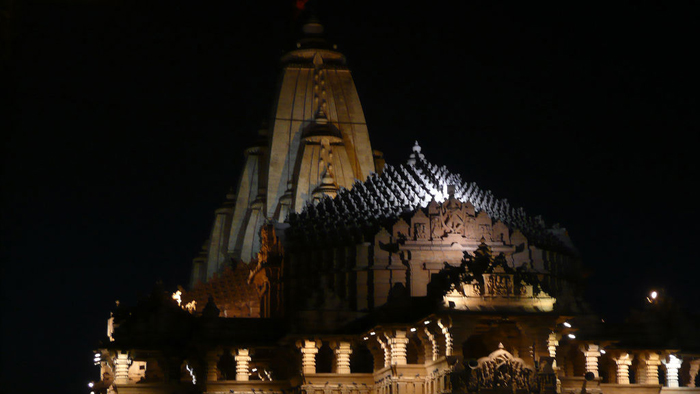
By air: Located about 55 km from Somnath Temple in Gujarat is Keshod Airport, which is closest to Somnath Temple. This airport is directly connected to Mumbai, after reaching this airport, Somnath Temple can be reached easily with the help of a bus and taxi.
By rail: The nearest railway station to Somnath Temple is Veraval, which is 7 km away from Somnath Temple by rail route, this railway station is well connected by rail service to major cities of the country including Ahmedabad, Gujarat.
By road: The Somnath Temple is located about 400 km from Ahmedabad, 266 km from Bhavnagar. Great bus services are available from Gujarat to reach this holy pilgrimage from any place. Along with this, there is also a good arrangement for the stay and food of the pilgrims who come to visit the Somnath temple.
Around the temple, the trusts of the temple are provided with rooms on rent to the pilgrims. Due to the ancient history of Somnath temple and its amazing architecture and magnificent design, devotees come from far and wide to visit here.

